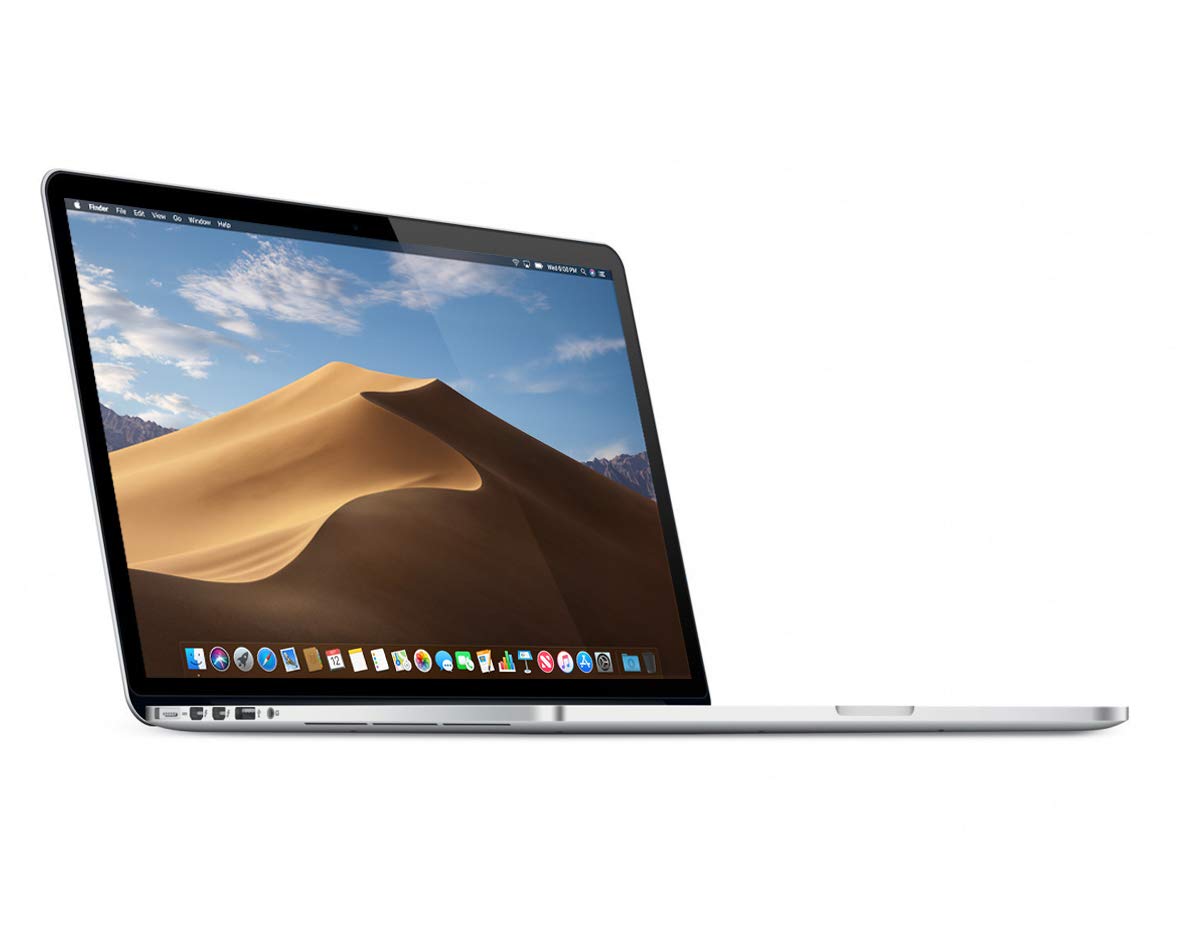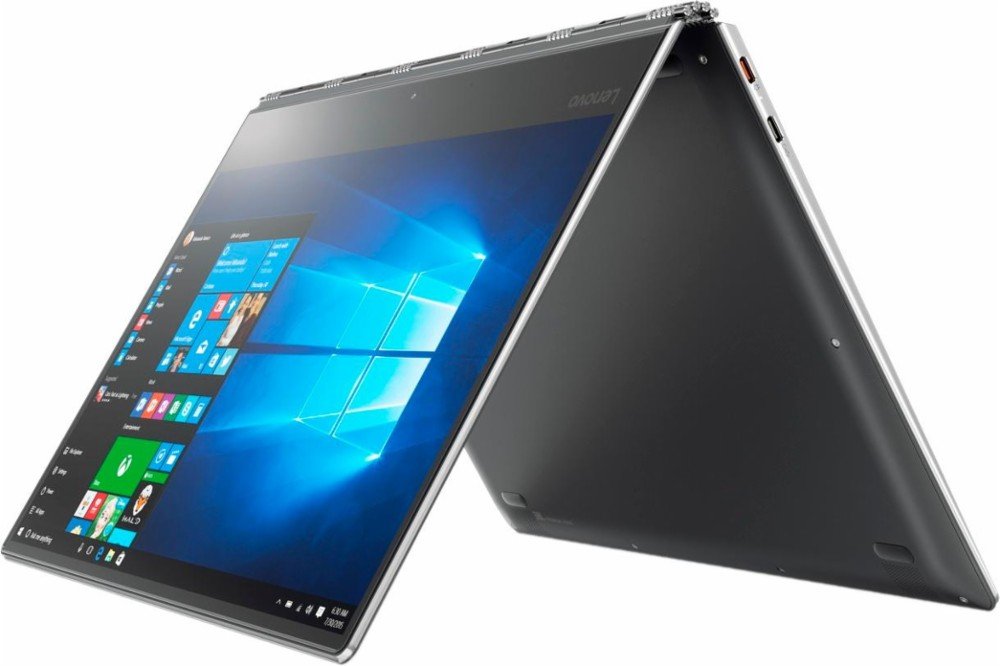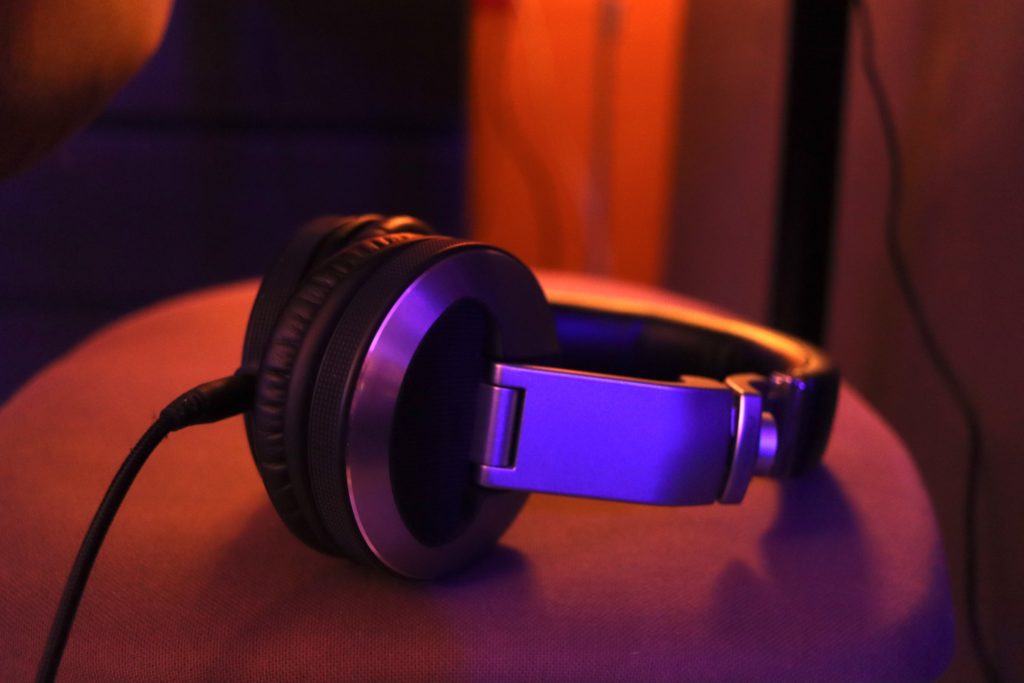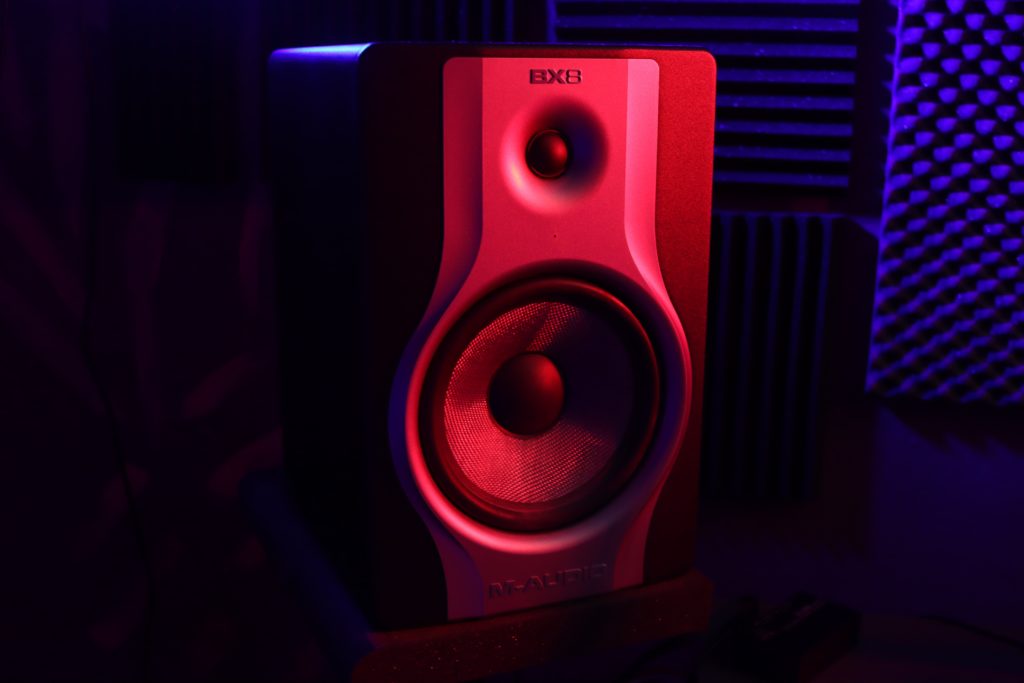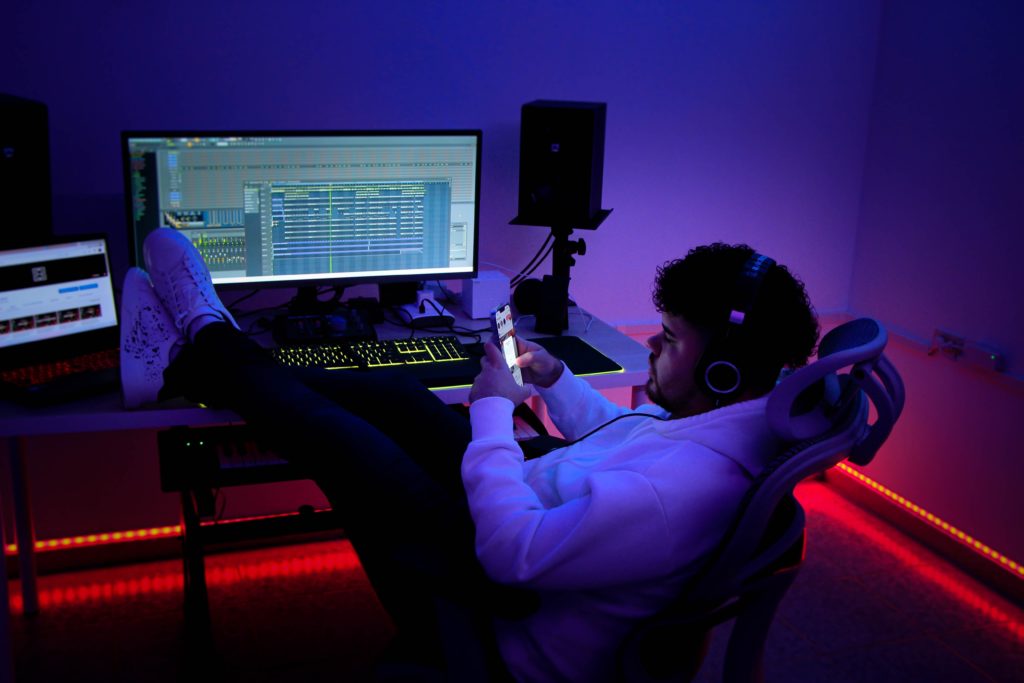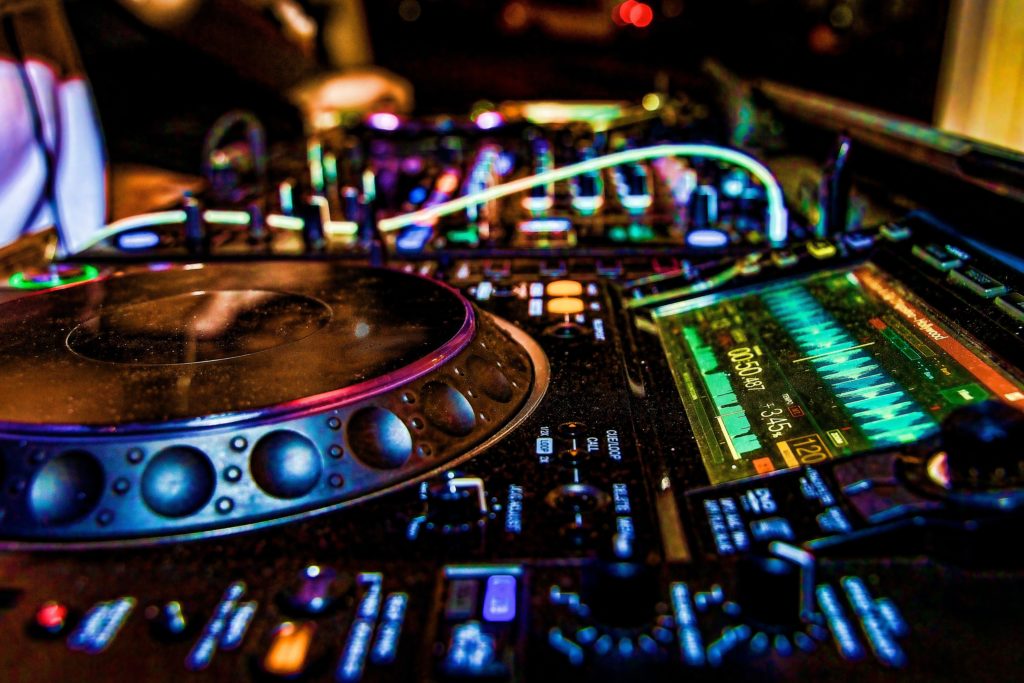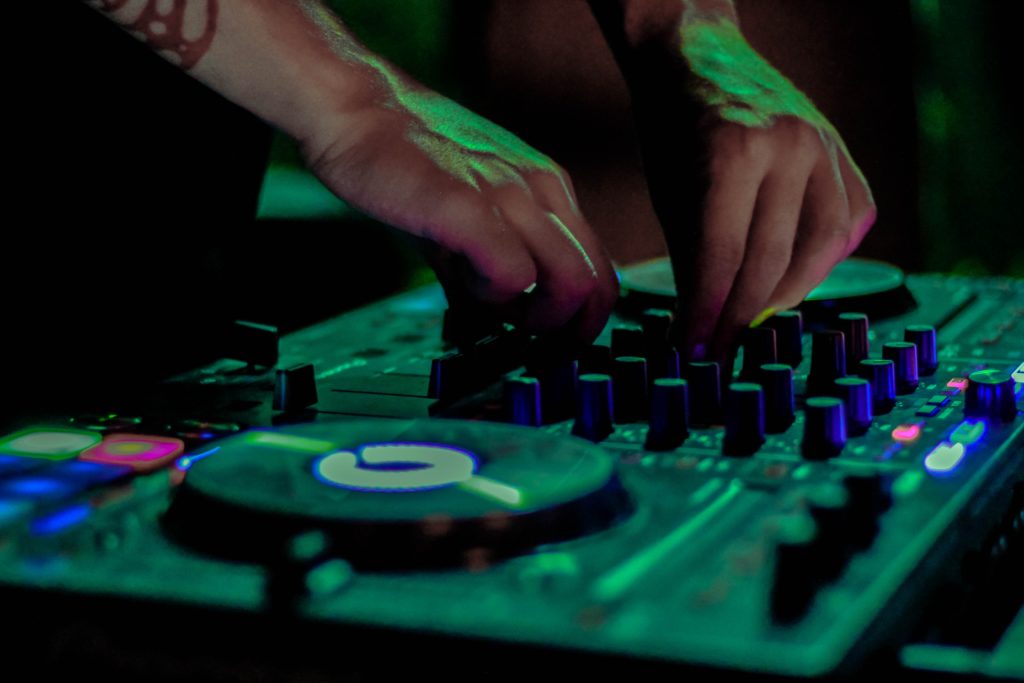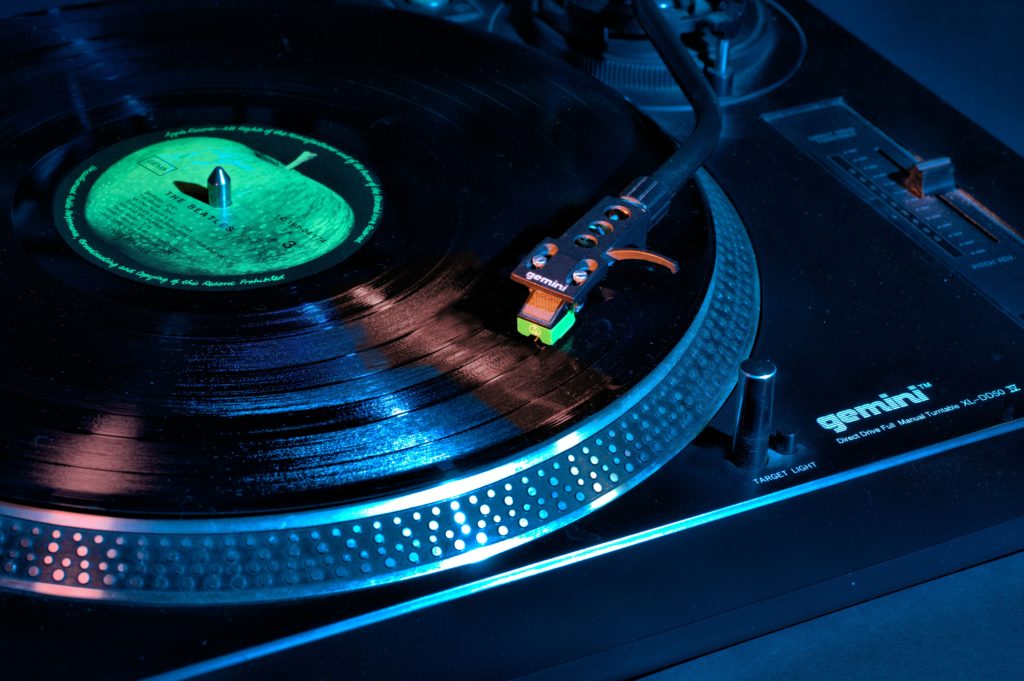Image
PRODUCT
PRODUCT DETAILS
Our #1 Rated
Our #1 Rated
Macbook Pro is a done-deal when it comes to a multi-purpose machine capable of keeping up with demanding workloads. It’s light, portable with a high-definition display, and the keys are highly responsive. The OLED touch bar offers quicker navigation within many applications and DAWs.
We were highly impressed with the processor on the Surface Pro. We tested it with 18 audio tracks overlaid with a compressor plug-in on each. It only used about 10-20% CPU and did not glitch out at any point.
Even with several GB of games and projects saved to the SSD card, it hardly made a dent in the memory space, and everything always loaded up lightning fast.
The graphics are typical of Apple and looked stunning when watching movies and playing games. The speakers were notably louder compared to the older Macbook Air too!
If you’re a frequent gamer who wants a machine capable of running multiple tasks in the background during your sessions, the Razor Blade stealth will easily meet your requirements.
If you’re looking for a powerful laptop with basic features, this laptop will certainly cover all your needs. We found the CPU to be highly-responsive and booting up took all but a matter of seconds.
If you’re looking for a powerful laptop with basic features, this laptop will certainly cover all your needs. We found the CPU to be highly-responsive and booting up took all but a matter of seconds.
We found this to be one of the best laptops for Ableton Live as it worked flawlessly during a grueling 3-hour mixdown. Many others we tested experienced one or two hiccups in comparison.
We fell in love with the build of this product. Not only is it lightweight and portable, it just looks a lot sleeker and better quality than most laptops in this price range.
Comfortable, robust padded headband with 2 small circular cups for reversible listening and monitoring on either side.
If you’re serious about music production or DJing, and don’t have the funds to splash out the dollars on analogue gear or hardware – investing in a powerful computer or quality laptop is the next best investment you can make.
Some producers like to lock themselves away in their caves all day making beats, while others prefer to find their inspiration outside of the bedroom.
In which case, if you’re more inclined to the mobile/on-the-go lifestyle, you’ll need a powerful laptop capable of storing a lot of data and handling a good few years of abuse.
So, we thought we’d lay out some long-lasting, affordable options of the best laptops for you to consider as the base of your music production.
In this article, we’re going to review the following best laptops:
What to Look For
A good laptop should have:
CPU – If you’re going to be working in a DAW with several plug-ins open, you’re going to need a system with a good processor that can handle multiple tasks. Rendering tracks with several channels and effects will also require a strong CPU. Laptops with Core i3, i5, or i7 processors are the best bet.
RAM – Producers and gamers should opt for 16GB and up for the best experience. Again, if you’re going to be running multiple applications at once, plenty of RAM is a must.
Operating System – Think Windows, Mac, iOS, Linux etc.
Disk Space – With all those sample packs, VSTs and other files, you should look for a laptop with plenty of storage space, or at least invest in an external hard drive.
Now… let’s take a look at our top picks for the best music production laptops in 2021.
Our Recommendation
One of Apple’s most seamless laptop models is the Macbook Pro Retina.
It features a high-definition LED retina display with a powerful AMD Radeon Pro 55X GPU. Making the graphics look pristine.
It runs off a speedy 4th-Gen 6-core Intel i7 processor with turbo boost up to 4.5GHz, complete with 16GB of RAM and 12MB cache. There is an option to upgrade the SSD from the standard 256GB it comes with to 512GB or 1TB.
Like the hardware found in the newer Macbooks and Apple Watches, this model incorporates Force Touch for pressure sensitivity and a more fluid response. It also boasts up to 10 hours battery life and 4 ThunderBolt USB Type-C ports.
PROS
- Exceptional performance and design
- Touch bar for quick and easy navigation
- Strong battery life
- Garageband Included
- Not too expensive to upgrade specs i.e. SSD and CPU
CONS
- Expensive
- Not as many ports as other laptops
Why we recommend: We understand if you’re anti-Mac. It’s not for everyone at the end of the day. In terms of music production capabilities though, the Pro Retina is one of the best choices due to its solid performance and ability to run multiple applications at once.
Unlike the 13” model, this one comes with 16GB RAM installed with a highly powerful i7 processor. This means plenty of storage space and the efficiency to create and mix music without delay or any programs freezing up.
The Retina also has an impressive battery life of 10-hours, and a ‘Touch Bar’ for quicker and easier maneuverability. It comes with Garageband by default, which is a great software for basic composition, however, the fact that it’s an Apple product means it also works with one of the most masterful DAWs on the market: Logic Pro X.
The Pro Retina is also incredibly light, thin, and durable which makes it fantastic for mobile use. We know it’s expensive, but it will last you well over a decade without compromising its design or performance, making it well worth the extra pennies.
The Surface Pro 4 is a versatile slim-line tablet which can be used as a laptop. It features a 2.4GHz Intel Core m3 processor with 3MB cache and up to 3GHz with Turbo Boost.
The screen measures in at 12.3” with an Intel HD graphics card and 8GB of storage space. However, there is the option of upgrading to a 128GB SD card for an extra cost should you need it.
Due to the fact it is a hybrid model, it works with popular DAWs such as FL Studio and Reason and runs off Windows 10. There are 2 x USB 3.0 ports plus a headphone/mic jack.
PROS
- 16GHz quad-core 8th-gen processor
- Sleek and lightweight design
- Impeccable build quality
- 8.5 hours of battery life
- Built-in speakers have excellent clarity
CONS
- Keyboard sold separately
- Can’t balance it on your lap
Why We Recommend: Although Microsoft are up to the 6th generation for the Surface Pro, the newer models don’t give much extra to boot compared to this one. It also costs significantly less, yet still packs a decent amount of memory and long-lasting battery life.
We were highly impressed with the processor on the Surface Pro. We tested it with 18 audio tracks overlaid with a compressor plug-in on each. It only used about 10-20% CPU and did not glitch out at any point. It’s admittedly bulky for a tablet, but it is lightweight and portable enough to be chucked in your backpack and forgotten about.
We also found the audio quality to be crisp and clear when it came to tunes with bass-heavy elements. There wasn’t much clipping or distortion at all, so you’ll safely be able to have the volume turned up max.
Dell’s small and slim XPS 15 has one of the most impressive processors in this range of Windows laptops. It comes with the latest 8th Gen Intel Core i7 processor and a NVIDIA GeForce GTX 1050 Ti graphics card.
There is also 512GB of SSD storage space and 16GB of memory included by default, but every model is upgradable to 32GB of RAM if desired. In addition, the XPS sports a stunning 15.6″ HD InfinityEdge display with the option of upgrading to a 4k touchscreen.
There are multiple USB 3.0 ports, HDMI and Thunderbolt-USB Type-C.
PROS
- Lightning fast 8th Gen i7 Core processor
- 512GB SSD drive
- Exceptional HD display
- Portable and compact
- Amazing build quality
- Great for gaming
CONS
- Fan is known to be a bit noisy
- No Ethernet port
Why We Recommend: Dell has always been a favorite of ours, and the XPS 15 still hits the benchmark when it comes to a quality, fast-performing laptop for music production and DJing. Compared to its predecessors, we found the 8th Gen Intel Core i7 processor to be highly responsive and fast-running, so you won’t have any issues if you need to carry out multiple tasks or have loads of static windows open (we managed to render a 1.5 hour movie in Premier with Kontakt running! Hoorah!). The GTX graphics card deliver a great performance and made the whole editing process extremely smooth.
The main highlight for us was the amount of storage included. Even with several GB of games and projects saved to the SSD, it hardly made a dent in the memory space, and everything always loaded up lightning fast. The extensive number of ports also mean you can connect all your audio gear and other devices effortlessly.
All in all, a highly affordable, multi-purpose laptop acting as the ideal solution for everyday tasks as well as complex music production.
Apple delivers another go-getter for our list, the 13″ Macbook Air.
It features an LED-back lit Retina display with an Intel UHD 617 graphics card. For CPU, it contains a 1.6GHz Intel Core i5 processor with Turbo boost up to 3.6GHz and 4MB cache.
By default there is a 128GB SSD with the optional upgrade to 256GB. The Macbook Air is compatible with all major DAWs and production software. It will provide you up to 10 hours battery life, even while working on the most detailed of tasks.
PROS
- Slim, lightweight and highly portable
- Powerful CPU w/ 3.6GHz Turbo boost
- 128GB of storage
- 7-10 hours of battery life (moderate use)
- Beautiful Retina HD display
CONS
- USB-C only, requires external adaptors
Why We Recommend: We’ve owned a few Macs in our time, including the former 12” model of the Air, which was equally as pleasing in many ways as this one.
The most notable difference we found with this one is in the weight. At just 2.7Ibs and 0.6 inches, it is incredibly light and easy to carry around for gigs and performances.
The graphics are typical of Apple and looked stunning when watching movies and playing games.
The speakers were notably louder compared to the older Macbook Air too! Although this model comes with a healthy amount of storage, it is easily upgradable if you have a couple of extra hundred dollars to spare.
The 128GB it comes with should suit the needs of most producers just fine though.
When it comes to gaming laptops, Razor are one of the most favored manufacturers with a hard-to-match reputation.
The Blade 15 follows in the footsteps of its earlier counterpart, with improved features that include a more sleek design, better graphics card and faster overall performance.
It boasts an 8th gen Core i7 processor with NVIDIA GeForce GTX graphics, 16GB of DD4 RAM and 128GB SSD. There are multiple USB ports which support USB 3.1, Thunderbolt Type-C, Ethernet and HDMI.
Weighing in at 4.4Ibs, the Razor Blade 15 has been built to last with a heavy focus on portability. Moderate use will easily provide up to 8 hours of battery life.
PROS
- Amazing slim-line build quality
- Ultra-fast 8th Gen i7 Core processor
- Multiple USB ports Inc. Thunderbolt Type-C
- Touchscreen enabled
- Plenty of RAM and memory
CONS
- Keys feel great but a bit fragile
- Battery life could be better
Why We Recommend: If you’re a frequent gamer who wants a machine capable of running multiple tasks in the background during your sessions, the Razor Blade stealth will easily meet your requirements.
It sports a powerful i7 Core processor which makes it a fantastic choice for producers and DJs alike. The GTX provide an ultra vivid 4k experience making it a great fit for gamers and developers needing a powerful graphics card that highlights all the details.
The 128GB SSD means you’ll have plenty of space to store even the largest of project files, without any compromise on performance or RAM.
You can also upgrade the memory to a 1TB HDD for an extra cost if needed.
Although many vouch for the Alienware 17 as being one of the best laptops for both gaming and production, the R4 15 edition certainly deserves a mention for its lighter design and easier portability.
The cheapest model comes with a 3.5GHz Intel i5 processor with 8GB RAM, but for a couple of hundred dollars extra, this can be upgraded to accommodate 16GB and a 4.4GHz quad-core processor.
There are several ports with an option to include Dell’s own Graphics Amplifier.
PROS
- Exceptional and fast performance
- Beautiful futuristic design
- Bright and vivid Max-Q 1920 x 1080 graphics
- Multiple ports and connections
- Powerful built-in speakers
CONS
- Heavy
- Can get a bit hot through overuse
Why We Recommend: When we tested this model after the Razor Blade, it made the latter looks like a monster in comparison.
This laptop is twice the weight and much thicker than most of the ones we’ve reviewed here, so it may not be the best for regular transport.
We soon established that the sheer power behind this model is why it’s needed though. We had 20 chrome tabs open, alongside a full-system Windows Defender scan and 32 heavily congested channels in Cubase.
To be frank, we’ve seen machines such as the ASUS Rog Scar series, which are twice as expensive and hardly capable of handling a similarly demanding workload.
The only downside is the battery life in this laptop… However, if you aren’t going to be as hands-on with it as us, you could easily squeeze 6-7 hours out of it.
A 2-in-1 laptop equipped with a powerful Intel Core i7 processor and 8GB of RAM, the Spectre x360 is the latest model circulating HP’s line of top-quality laptops.
It comes with a 13.3” 1080p screen which can be flipped backwards into a tablet and relies on a sophisticated Intel UHD 520 GPU graphics card.
In terms of storage, it starts from 256GB but you can easily opt for 1TB if it’s needed.
Depending on workload, it can provide up to 12 hours of uninterrupted battery life.
PROS
- Sleek and lightweight design
- Great battery life (10 hours on average)
- Lightning fast Intel Core i7 processor
- 256GB SSD
- Intel HD Graphics 520
CONS
- Memory upgrade not possible
- Average sound quality
Why We Recommend: If you’re looking for a powerful laptop with basic features, great battery life and decent graphics – this laptop will certainly cover all your needs.
We found the CPU to be extremely forgiving when it was overloaded, and booting up took all but a matter of seconds. Though we put the speaker quality at a disadvantage, it sounds absolutely fine when fed through a soundcard and good set of monitors.
We didn’t experience any distortion in the low frequency range, and it produced some particularly smooth mids that brought the color out in a lot of tracks with vocal elements. It was also very easy to just chuck in your bag and carry out to wherever you need to go.
There are cheaper 2-in-1 devices out there of course, but if you’re looking for a multi-purpose machine with a solid build, good amount of storage and a healthy CPU – this will more than suffice.
ASUS present one of their second instalment of the ROG Strix gaming laptop.
Measuring in at 17.3”, the SCAR II homes an Intel Core i7 processing unit, with 16GB of RAM and up to 1TB on the hard drive.
Graphics card sports a NVIDIA GeForce GTX 1060 with 1920 x 1080px resolution. USB ports support both Type-A and Type-C.
There is also a sophisticated Hypercool Pro thermal cooling system with 12v fans inside and anti-dust tunnels.
PROS
- Slim and durable design
- Multiple USB ports Inc. Type-A & Type-C
- 16GB of RAM + Intel Core i7 CPU
- NVIDIA GeForce GTX 1060 graphics card
- Customizable RGB gaming keyboard
CONS
- Strange keyboard layout
- Backlight bleed on screen corners
- Quite a few updates required when first switched on
Why We Recommend: We found this to be one of the best laptops for Ableton Live, as it worked flawlessly during a grueling 3-hour mixdown. Many others we tested experienced one or two hiccups in comparison.
The amount of RAM is good, but opting for 32GB isn’t going to blow a major hole in the bank. The sound quality is powerful and feels even more immersive when wearing headphones and when connected to an interface.
You’ll find more than enough ports for connecting all of your external devices and audio gear directly to your DAW. This includes VR-ready connections and USB-C. The Scar II also has anti-dust tunnels, plus upgraded 12v fans which automatically readjusts the temperature according the CPU AND GPU usage – an extremely handy cool down feature that will allow you to play and work for longer.
Another promising 2-in-1 option for the traveling producer is the Yoga 910.
This lightweight, 13.9’ touch screen laptop comes with an Intel i7 processor, reaching speeds up to 2.7GHz. In terms of memory, it gives the option of 8GB, 16GB or 32GB on higher-up models, while storage capacity can go up to 1TB for the SSD.
There are multiple ports that support regular USB and 2 x USB-C ports. The built-in JBL speakers offer an immersive audio experience and the battery life lasts approximately 10 hours through moderate activity.
PROS
- Light and slim-line design
- Strong battery life up to 10.5 hours
- 8GB of RAM (upgradable to 32GB)
- Multiple ports incl. Type-C
- Fluid keyboard response
CONS
- Fan can be a bit noisy
- Doesn’t support Thunderbolt
Why We Recommend: We fell in love with the build of this product. Not only is it lightweight and portable, it just looks a lot sleeker and better quality than most laptops in this price range.
The same goes for the feel of the keypad too. We opted for the 8GB RAM, and it still felt that this was more than enough to carry out everyday tasks and manage our projects.
Although it got a bit hot by the time we needed to put it on charge, this didn’t cripple its performance in any way.
We also found it worked effortlessly with all music production software, even if you’ve got a lot of plugins and other apps open there won’t be any loss of speed of freezing in the software.
The Dell Inspiron 15 7000 packs a powerful CPU unit up to 3.6GHz complete with 8GB of RAM and 1TB HDD up to 5400 rpm.
Weighing in at 5.78Ibs, the 7000 series is a slim and compact laptop armed with a NVIDIA GeForce GTX 1050 graphics card and 15.6” anti-glare display.
It also features multiple ports for both 2.0 and 3.0 USB. Sound wise, there are front-firing MaxxAudio Pro speakers with subwoofer.
The battery life lasts approximately 6 hours.
PROS
- Great value for money
- Strong and sturdy build
- Clean and crisp speaker sound
- Powerful Intel Core i7 CPU + 8GB RAM
- NVIDIA GeForce GTX graphics card
CONS
- Weak battery life
- Display brightness is a bit weak
- Fans a bit noisy
Why We Recommend: As one of the most affordable, entry-level laptops on our list – the Dell Inspiron 15 7000 is a great all-around option for gamers, producers and DJs.
The vivid 4K display makes gaming and movies with lots of CGI look almost real. We also found the speakers to give off a clear, treble-heavy sound which can easily fill a medium-sized room.
The i7 processor meant we could run operations and apps in the background without a single drawback. This is also great for rendering long videos while running any big tasks in the background.
The only downside is the battery life. It lasted approximately 6 hours, which makes it more suitable for people looking to use it on short commutes rather than long journeys.
The Champion
We think the Macbook Pro is a done-deal when it comes to a multi-purpose machine capable of keeping up with demanding workloads.
It’s light, portable with a high-definition display, and the keys are highly responsive.
The OLED touch bar offers quicker navigation within many applications and DAWs. If using Logic or Garageband, users will find this laptop particularly beneficial.
You’ll marvel at its fast performance, and ability to store large sums of data and project files. The only downfall is it may require an external adaptor or docking station when hooking up USBs…
That being said, you can purchase a top-quality USB hub for as little as $75. It will probably last you as long as the laptop itself too!
If you want to keep your spending bracket to a minimum in the process, you can always opt for an older model of the Macbook or pick up a renewed one for under $1,000.
It will still offer more than enough functions for you to create awesome, top-quality music.
Final Note
With modern technology being as advanced as it is, you don’t need to spend thousands of dollars to own a good quality laptop these days. When it comes to music production however, spending that little bit extra will make a big difference to your productivity and will eliminate much of the stress when carrying out multiple tasks.
FAQs
Is there an advantage to opting for CPU with Turbo Boost?
Yes and no. There are some misconceptions around whether turbo boost does anything to truly impact your CPU. The truth is, it’s generally ok for checking emails and loading webpages, but no real benefit when making music. Your processor will still take a hit if you’ve got tons of operations happening all at once.
Will 8GB of RAM be enough to store all of my projects?
That really depends on how many you have currently, as well as if you will be looking to store lots of other files and media too. 8GB is generally enough for most music producers, gamers and Mac users, however if you’re someone who constantly has windows and programs open, these all collectively suck up a lot of the RAM and the CPU, and can take up quite a few gigabytes at a time. We mostly recommend 16GB for that sweet spot.
What’s the best laptop for running Ableton Live?
The MacBook Pro is an all-around winner for most DAWs, but when it comes to Ableton in particular, it’s truly a laptop that was made to be it’s perfect match. The processor, RAM and SSD are capable of handling multiple tasks at once, without even making a dent in the CPU. You can safely have your devices and outboard gear plugged in too, making it a great option for those who will be using it for physical live performances

